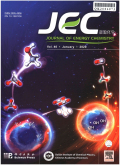- 钛学术文献服务平台 \
- 学术期刊 \
- 工业技术期刊 \
- 石油与天然气工业期刊 \
- 能源化学期刊 \
Accurate machine learning models based on small dataset of energetic materials through spatial matrix featurization methods
Accurate machine learning models based on small dataset of energetic materials through spatial matrix featurization methods
基本信息来源于合作网站,原文需代理用户跳转至来源网站获取
摘要:
A large database is desired for machine learning (ML) technology to make accurate predictions of mate-rials physicochemical properties based on their molecular structure.When a large database is not avail-able,the development of proper featurization method based on physicochemical nature of target proprieties can improve the predictive power of ML models with a smaller database.In this work,we show that two new featurization methods,volume occupation spatial matrix and heat contribution spa-tial matrix,can improve the accuracy in predicting energetic materials' crystal density (ρcrystal) and solid phase enthalpy of formation (Hf,solid) using a database containing 451 energetic molecules.Their mean absolute errors are reduced from 0.048 g/cm3 and 24.67 kcal/mol to 0.035 g/cm3 and 9.66 kcal/mol,respectively.By leave-one-out-cross-validation,the newly developed ML models can be used to deter-mine the performance of most kinds of energetic materials except cubanes.Our ML models are applied to predict ρcrystal and Hf,solid of CHON-based molecules of the 150 million sized PubChem database,and screened out 56 candidates with competitive detonation performance and reasonable chemical struc-tures.With further improvement in future,spatial matrices have the potential of becoming multifunc-tional ML simulation tools that could provide even better predictions in wider fields of materials science.

推荐文章
Spatial prediction of landslide susceptibility using GIS-based statistical and machine learning mode
Landslide susceptibility mapping
Statistical model
Machine learning model
Four cases
Forest carbon storage in Guizhou Province based on field measurement dataset
Forest carbon storage
Field measurement dataset
Karst landform
Rapid estimation of soil heavy metal nickel content based on optimized screening of near-infrared sp
Heavy metal
Band extraction
Partial least squares regression
Extreme learning machine
Near infrared spectroscopy
内容分析
关键词云
关键词热度
相关文献总数
(/次)
(/年)
引文网络
引文网络
二级参考文献 (0)
共引文献 (0)
参考文献 (0)
节点文献
引证文献 (0)
同被引文献 (0)
二级引证文献 (0)
2021(0)
- 参考文献(0)
- 二级参考文献(0)
- 引证文献(0)
- 二级引证文献(0)
引文网络交叉学科
相关学者/机构
期刊影响力
能源化学
主办单位:
中国科学院大连化学物理研究所
中国科学院成都有机化学研究所
出版周期:
双月刊
ISSN:
2095-4956
CN:
10-1287/O6
开本:
出版地:
大连市中山路457号
邮发代号:
创刊时间:
语种:
eng
出版文献量(篇)
2804
总下载数(次)
0
总被引数(次)
7996
期刊文献
相关文献
推荐文献
- 期刊分类
- 期刊(年)
- 期刊(期)
- 期刊推荐
一般工业技术
交通运输
军事科技
冶金工业
动力工程
化学工业
原子能技术
大学学报
建筑科学
无线电电子学与电信技术
机械与仪表工业
水利工程
环境科学与安全科学
电工技术
石油与天然气工业
矿业工程
自动化技术与计算机技术
航空航天
轻工业与手工业
金属学与金属工艺
能源化学2022
能源化学2021
能源化学2020
能源化学2019
能源化学2018
能源化学2017
能源化学2016
能源化学2015
能源化学2014
能源化学2013
能源化学2012
能源化学2011
能源化学2010
能源化学2009
能源化学2008
能源化学2007
能源化学2006
能源化学2005
能源化学2004
能源化学2003
能源化学2002
能源化学2001
能源化学2021年第9期
能源化学2021年第8期
能源化学2021年第7期
能源化学2021年第6期
能源化学2021年第5期
能源化学2021年第4期
能源化学2021年第3期
能源化学2021年第2期
能源化学2021年第12期
能源化学2021年第1期

 免费查重
免费查重










